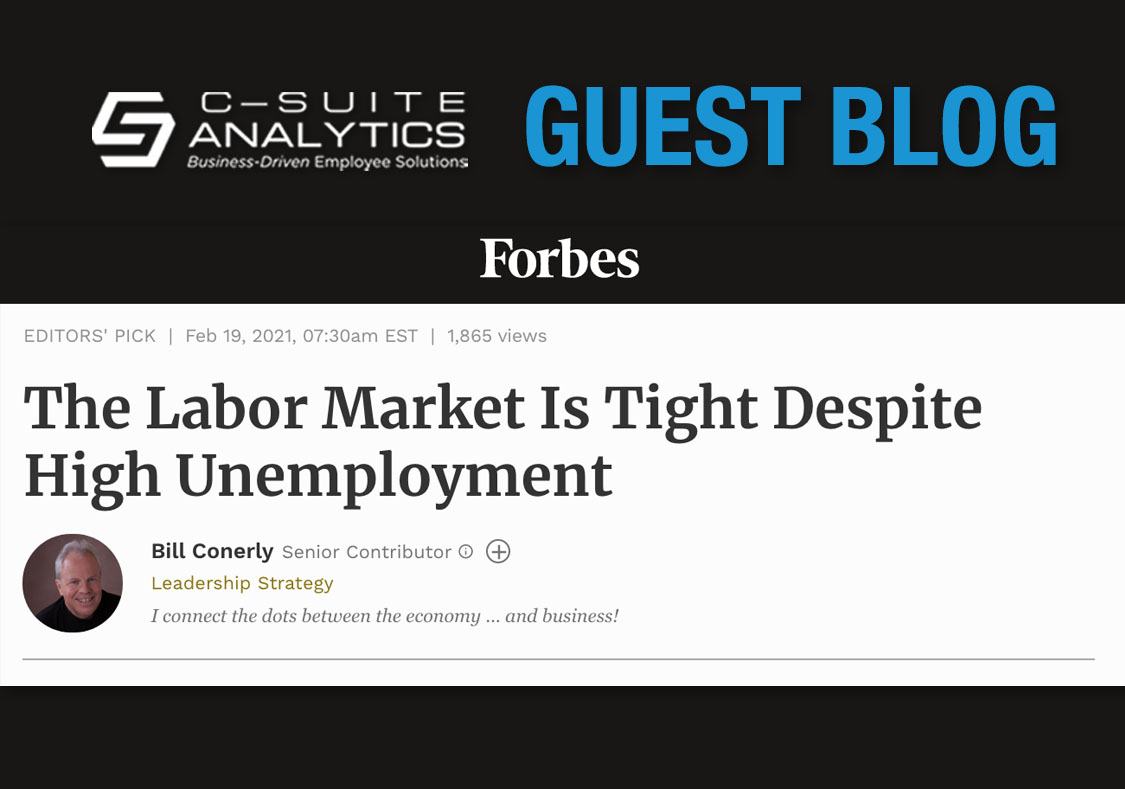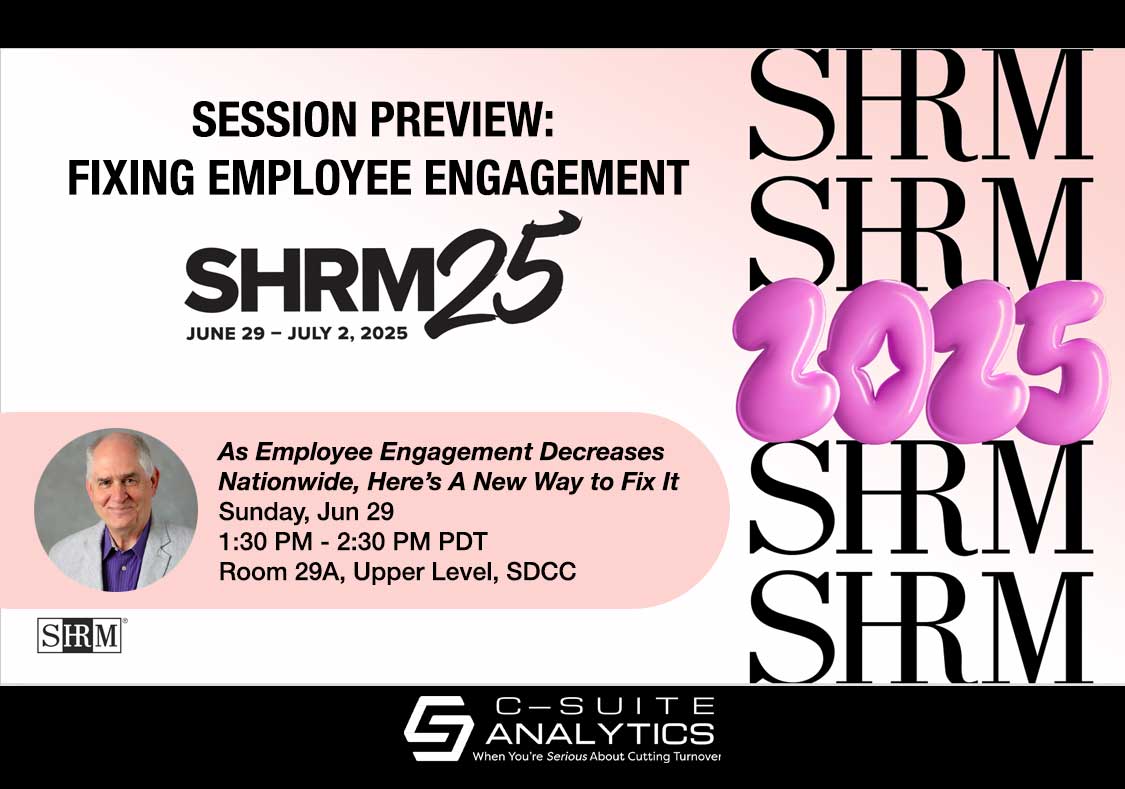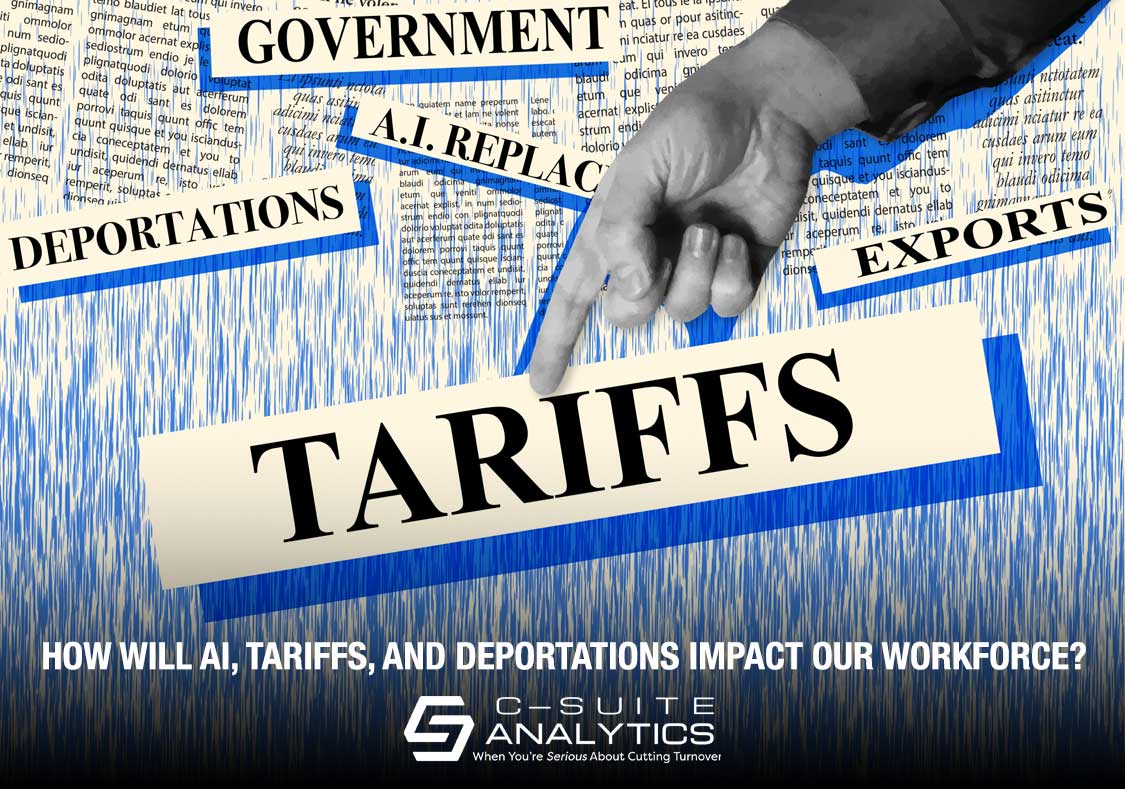To be blunt, employee engagement is a mess. Gallup says global disengagement costs $8.8 trillion…
Forbes Magazine Reinforces the Drumbeat for Employee Retention Now

During these unprecedented economic times, how can millions be out of work yet so many workers are deciding to quit? Or even more strange, that unemployment is 6.3% but one study projects it will be down to 3.2% within twelve months? That is literally cutting our nation’s unemployment rate in half, fast, in a matter of months.
Forbes Magazine published an article last week connecting these mysterious dots further, and concluded that retaining your employees is your absolute best people-management strategy for these times. Their quoting my work near the end helped me realize that our conclusions here have been on the right track all along. Forbes’ full article is below, reprinted with their permission. Happy reading!

The Labor Market Is Tight Despite High Unemployment
Bill Conerly, Senior Contributor
A banker in North Carolina says that his greatest challenge is finding talent, as does one in Oregon. The owner of a large nursery in Minnesota reports that seasonal workers are hard to find. A real estate developer in Washington state reports that the availability of construction workers is a major constraint on new housing. The same story comes from two mid-sized manufacturers in Oregon. How can the labor market be tight with unemployment at 6.3% of the labor force? And Federal Reserve chairman Jerome Powell recently said that the real unemployment rate is closer to 10%. Yet business leaders have trouble finding workers.
Many of the unemployed are not available for jobs that need to be filled, with multiple reasons. Some lack the right skills for the open positions, others prefer not to change occupations, still others are not looking for work because of child care responsibilities, discouragement about their job prospects or preference for collecting unemployment insurance over earning wages. Employers should ignore the unemployment stories in the press and focus, instead, on employee recruitment and retention.
Millions of people lost jobs in the pandemic. The largest group were laid off in March and April 2020, but layoffs continued above pre-pandemic averages even in recent weeks. Several factors, though, prevent these people from filling the positions that are open.
Some people who lost jobs decided it was time to retire. That’s common for many people who are near the usual retirement age. They will keep working while they have a job, but they won’t go looking for a new job if laid off. In the pandemic, though, the normal pattern was accentuated by people fearful of contracting COVID-19.
Every recession results in some people too discouraged to bother looking for a job. These folks are not counted in the headline unemployment rate, but they do show up in other measures of unemployment. Discouragement is probably higher this time around, especially for people with specialties in leisure and hospitality.
In the pandemic recession even more parents left the labor force to take care of their children because schools were closed.
Among those who are still looking for work, some are very flexible about what jobs they will take, but others have strong preferences they will follow. People usually become accustomed to certain hours of work, and their families also adjust. So the restaurant cook who normally got off work at 10:00 pm might not want an 9-to-5 shift in another occupation. And many people have found a job that they are comfortable in, even if the pay is generally low. The hotel housekeeper may feel good doing a job that she knows how to do well, with co-workers she has known for years. She may prefer to wait for her old job rather than start another occupation.
These decisions interact with unemployment benefits to alter behavior of some people. The usual benefit structure provides less income for the unemployed than they would earn working. The $600 bonus paid out in the early months of the pandemic put more money in many unemployed people’s pockets than they had been earning. The current $300 bonus and Biden’s proposed $400 weekly bonus similarly erode work incentives, though not as badly as the old bonus.
The decisions that people make about looking for work and selecting jobs don’t always maximize their financial situation, but all of us trade money for other values. Few, if anyone, make all life choices for the greatest income. Many of us could earn more in a different city, or a different occupation, or working different shifts. We make our decisions based on all the other things we want out of life, including family, spirituality, convenience, and personality preferences. Those personality preferences include new experiences or comfortable routines, socialization or isolation, variety or consistency. Understanding how a person relates to a job is an important part of finding a good fit. Workers who do find a job that matches their personality perform better, remain on the job longer and generally find greater satisfaction from their work. Regardless of whether an outsider would say that the unemployed person’s decisions are right or wrong, those decisions must be treated as facts to be dealt with.
For employers, the facts are that workers are hard to find. Retention of current employees must be high priority, not so much for the HR department but for the line managers whose jobs require that they get the work completed. Dick Finnegan, the Stay Interview expert, writes, “The greatest reasons why employees quit is what they talk about over dinner.” Even those of us who love hard data must acknowledge this, which reinforces the old adage that people don’t quit jobs, they quit bosses. And it is those bosses they talk about over dinner.
Employee retention should rise to the top of every business leader’s to-do list. The problem won’t ease as the pandemic fades away and the economy improves. Companies dependent on employees must train their managers to be better bosses, to keep the vital workers they have now.
Original article can be found here: https://www.forbes.com/sites/billconerly/2021/02/19/the-labor-market-is-tight-despite-high-unemployment/?sh=48ba24547924
Dick Finnegan is SHRM’s top-selling author and top-rated webcast presenter. Please email your comments to DFinnegan@C-SuiteAnalytics.com. You are also welcome to forward this blog to anyone you believe would find it helpful.



